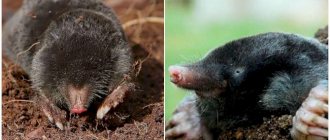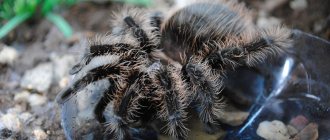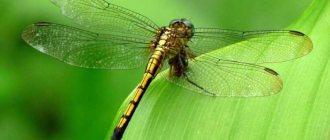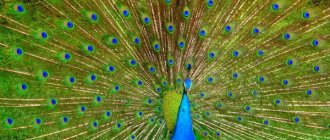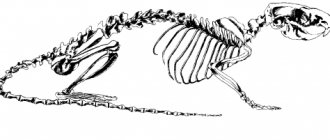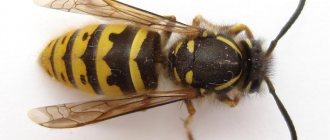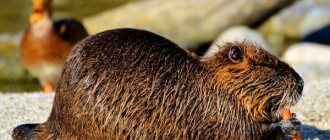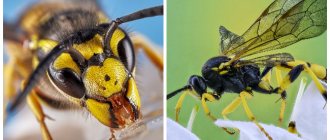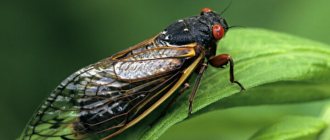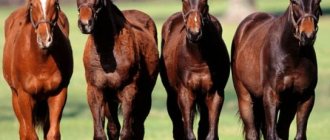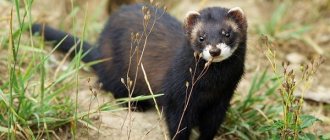Description and features
Dragonflies are flying predatory insects. They belong to the order of dragonflies, which has more than 6,000 species. The sizes of insects, depending on the species, range from 1.5 to 15 cm, and the wingspan is from 2 to 19 cm. The appearance of the dragonfly is easily recognizable. The insect has a large head with large eyes, short antennae, powerful mouthparts, chest, abdomen, three pairs of legs and two pairs of wings. Body color can be very different; dragonflies of various colors are found in the world. Some of them have a metallic sheen to their body.
Appearance
The dragonfly's head is very mobile and can rotate 180⁰. The eyes consist of a large number of facets (from 10 to 27 thousand). The lower rows of eye elements can only perceive the colors of objects, and the upper ones their shape. There are 3 simple eyes located on the crown. This structure and location of the eyes makes it possible for the dragonfly to survey the surrounding space not only in front of itself, it sees what is happening from the side, above and even behind.
But with the other senses the situation is much worse. Insects have a very weak sense of smell, and hearing is practically absent. The gnawing type oral apparatus is formed by strong, durable jaws, which are covered by the upper and lower lips.
The main feature that distinguishes dragonflies from other insects is their elongated abdomen, which makes up most of the body. The wings are large, transparent, consist of 2 layers of chitin and have many overlapping veins.
The tarsi consist of 3 segments, each of which is covered with small spines. The dragonfly needs its paws for grasping and holding prey, as well as for taking off and landing. Insects practically do not use them to move. During flight, the legs fold into the shape of a basket. This helps the insect instantly grab prey that gets in its way.
"Jumping Dragonfly..."
Vadim Gavrilov, senior scientific co-workers Zvenigorod Biological Station named after. S. N. Skadovsky Faculty of Biology, Moscow State University
Dragonflies are one of the most ancient insects: their ancestors appeared on our planet about 350 million years ago, and over their multimillion-year history, dragonflies have remained virtually unchanged. But even without acquiring significant improvements during evolution, the dragonfly is an amazing insect, an almost ideal predator. It is believed that dragonflies were the first animals to master the airspace.
A slender elongated body, a wide chest, a gnawing mouthpart, large wings and well-developed vision say a lot about the dragonfly and its way of life. The dragonfly is a predator, and very fast and agile. She catches small insects with her jagged jaws right on the fly, and large ones with her paws.
The most common prey of dragonflies are insects, such as flies, mosquitoes and other flying insects, down to smaller dragonflies.
Dragonflies have long legs that point forward; the front ones are shorter than the back ones, which makes it easier to capture and hold prey.
The slender body of the dragonfly acts as a balancer. Males have peculiar forceps at the end of their abdomen, which help to hold the female by the neck during mating.
Yellow dragonfly ( Sympetrum flaveolum
)
Dragonflies are excellent flyers. They either freeze in the air, or suddenly soar upward. When thrown, they can reach speeds of up to 100 km/h. Dragonflies can fly without resting for several hours. The speed and duration of flight are provided by four wings, with each pair acting independently, but at the same time surprisingly harmoniously. Dragonflies can easily fly many kilometers. During flight, they beat their wings 100–150 times per second. When evening comes, the dragonfly settles on some plant and rests until the next morning.
Yellowlegged damsel ( Gomphus flavipes
)
When looking at a dragonfly, the first thing that attracts attention is the eyes. Like many insects, dragonflies have compound eyes. Each consists of 30 thousand individual facets. Each facet works on its own and is isolated from the rest by pigment cells, with only the lower ones being able to distinguish colors, and the upper ones only being able to distinguish shapes. With the help of the upper facets, the dragonfly distinguishes only black and white tones, therefore, having noticed an insect in front of it, it tries not to lose it against the light background of the sky. But when a dragonfly rises above its prey, preparing to attack, it needs to clearly see the insect against the background of the ground. And here we need lower facets, with the help of which it distinguishes colors.
Blood red dragonfly ( Sympetrum sanguineum
)
Thanks to such unusual properties of the eyes and their structure, dragonflies see much better than many other insects. They notice prey at a distance of several meters. Their eyes simultaneously see everything that happens in front, behind and on the sides. Insects see shadows and sense any movement around them, including human movement. Although dragonflies sit motionless, their heads are constantly in motion - with their huge faceted eyes, these predators are constantly looking out for flies, mosquitoes, horseflies and other prey.
Platycnemis pennipes
) with the victim
Different types of dragonflies differ from each other in small structural features, sizes and colors, and some even have colored wings. The color of dragonflies is dominated by green, blue, yellow, and brown shades. The wings come with spots of various colors. Typically females are paler than males.
Splendid beauty ( Calopteryx splendens
)
About 60 species of dragonflies have been recorded in the Moscow region, and over 4,500 species of dragonflies have been recorded in the world. In the Moscow region, the first dragonflies appear at the end of May. As a rule, these are small species (arrows), and large ones - true dragonflies - begin to fly in the summer.
Dragonflies mate on the fly. The secondary copulatory apparatus of males is highly specialized and has no analogues among insects - it is located at the very base of the abdomen, where seminal fluid is transferred from the usual genital opening at the apex (end) of the abdomen. Dragonfly mating is a very complex process. After performing the ritual of courtship between a male and a female, dragonflies mate into a so-called copulatory pair, in which the male holds the female near him with the help of his legs, and then with the help of specially adapted pincer-like anal appendages of the abdomen.
Platycnemis pennipes
). Pairing
The males of some species of dragonflies hold the female by the head, in other species - by the prothorax, all this happens in flight, with the male flying in front. The female bends her abdomen forward towards the copulatory apparatus of the male, forming a “nuptial ring”. Arrow dragonflies fly together for a long time, with the female periodically sitting down, and the male taking a position perpendicular to her and maintaining balance with the help of his wings. Sometimes the male sits down, and the female hangs, clinging to his abdomen. Mating, depending on the type of dragonfly, can last from a few seconds to several hours.
Yellow dragonfly ( Sympetrum flaveolum
). Pairing
Dragonflies lay eggs in water or tissues of aquatic plants, less often in wet soil. Some females lay eggs while still in mating with the male, in other dragonflies the male flies over the female at this time, in the third case the male simply flies away about his business, and the female lays eggs on her own.
Platycnemis pennipes
)
Transformation in dragonflies is incomplete. Immature wingless nymphs of dragonflies are called naiads and develop in water. Dragonfly nymphs are also predators, they feed on the larvae of aquatic insects, and sometimes attack tadpoles and fish fry; in turn, serve as food for fish. At the end of development, the nymphs crawl out onto semi-aquatic plants or onto the soil near a reservoir, where the last molt takes place, as a result of which an adult winged dragonfly is born.
We express our gratitude to Oleg Kosterin and Alexey Kupriyanov for their assistance in preparing the article.
Source
Kinds
All dragonflies are divided into 3 subspecies:
- Homoptera - this includes the smallest insects with an elegant body and wings of equal length;
- heteroptera - in this category, the rear pair of wings has an expanded base, thanks to which they can develop high speed;
- anisozygoptera is a rather rare group living in Japan, Nepal and Tibet; representatives of this subspecies combine the characteristics of the previous two.
The most common species of dragonflies belonging to Homoptera are:
- beauties;
- arrows;
- Lutki;
- planipedes.
The suborder heteroptera includes:
- grandfathers;
- grandmothers;
- rocker arms;
- club-bellies;
- Flat bellies.
Flat-bellied
All dragonflies are amphibious, that is, at different stages of development they live in water and on land. In the aquatic environment, eggs develop and larvae, which are otherwise called naiads, grow; the life activity of adults takes place in the air and on land.
In Dahl's dictionary
Wed rocker m. lever in action; a pole or iron bar that lies on a support point and moves up and down on a balance: a lever of scales and a steelyard; a lever that moves the pistons of pumps back and forth, or transmits motion in machines; kachun, motor; lever for ringing bells, etc.; a single water carrier, a bow-like lever, with which a pair of buckets, or two bundles of linen, etc. are carried on the shoulder, and in some places, a yarosl. rocker arm and khlud, a large, big water-pot, for two. She brought a rocker of water and two buckets. | Vaga, in the Saratov plow. | Insect dragonfly, Libellula. Green rocker, rocker, rocker. | The constellation Ursa Major, by which the peasants recognize midnight, saying: the rocker has rocked: in the south there is a cart, in the east. horse at rest, to the north. elk. The smoke swirls like a rocker, waddling in an arc. A woman's mind is like a woman's yoke: both askew and crooked, and at two ends. The craft is not a rocker, it will not drag your shoulders. A tight bow is a yoke, hardened arrows are a spindle. Don't step over the rocker, it will writhe. He lifted the whole house with a rocker. Dust in a column, smoke in a rocker - either from melancholy, or from dancing! Dust is a pillar, smoke is a rocker - but the hut is not heated, not swept! Rocker, rocker insect, dragonfly. Rocker, -mental, -mental, related to the rocker. Rocker-shaped, in the form of a rocker arm, rocker-shaped. Rocker or -shchik m. who makes rockers, buckets, or weights, weigher. Nizhny Novgorod rocker Vesovshchikov received a medal at the London exhibition. Rocker, walk with a lever, rocker, pump up and down.
Lifestyle and habitat
Dragonflies live in almost all corners of the globe; they are not found only in Antarctica, Greenland, Iceland and the islands of the Arctic Ocean. The wide distribution area is due to the ancient origin of insects, their ability to move quickly and over long distances, as well as the lack of food specialization.
Insects prefer warm regions with high humidity. Dragonflies live only in those areas where periods with stable negative temperatures last no more than 90-120 days.
The habitat of dragonflies is closely related to water bodies, since it is on water that females lay their eggs. The choice of pond is largely determined by the type of insect. These can be lakes, rivers, ponds and even flooded ravines or pits. The larvae, emerging from the eggs, grow and develop in water, and the adult dragonfly, having laid a clutch, can remain nearby or fly away over a long distance, measured in hundreds of kilometers, and most often the flights are made alone.
You can meet a dragonfly in nature in any open area, for example, on a forest edge or in a meadow. This is due to the fact that it is very important for the insect to be exposed to the sun. Dragonflies are diurnal, going out to hunt in the morning or evening. As night approaches, they hide in the grass or in the crown of trees.
Fact #2: Dragonflies are effective hunters
Dragonflies are incredibly efficient, capturing their prey 95% of the time. By comparison, sharks, one of nature's fiercest predators, manage to catch only half of the prey they hunt. Lions - “sharks on earth” - are luckier - they hit more than half of their targets. At the same time, lions move along the savannah in zigzags following their prey, without thinking through the trajectory of its movement. If dragonflies were big enough to hunt gazelles, then lions would starve to death because they would be clearly ineffective.
When a dragonfly sees its prey, it almost always catches it.
Not only operating systems, but also insects can multitask.
Nutrition
Dragonflies are aggressive predators that pose a danger to many species of insects (mostly flying ones). They even attack those larger than them, and in most cases successfully. Interestingly, most species eat prey on the fly while in the air. They are very voracious, so they eat several dozen insects per day, the total weight of which significantly exceeds their own weight.
So, what do adult dragonflies eat:
- mosquitoes;
- flies;
- midges;
- beetles;
- spiders;
- moth;
- dragonflies.
These insects can be divided into several categories according to their hunting method:
- free upper tier predators - species that can fly high, lie in wait for prey at a height of 2 - 9 m above the ground;
- free hunters of the middle tier - hunt at a height of 0.5 - 2 m above the ground, most often circling over bodies of water, only occasionally resting on the grass or plants sticking out of the water;
- lying in wait hunters - sit in ambush on blades of grass or bushes, waiting for a prey flying past, and when they notice it, they suddenly take off and attack;
- grazing predators - hunt in thickets of grass, flitting from place to place in search of prey, having caught it, they eat it while sitting on a plant.
Dragonfly larvae feed on fish fry, leeches, insect larvae, tadpoles, and small crustaceans.
An excerpt characterizing the Blue Rocker
Anna Pavlovna's living room began to gradually fill up. The highest nobility of St. Petersburg arrived, people of the most diverse ages and characters, but identical in the society in which they all lived; Prince Vasily's daughter, the beautiful Helen, arrived, picking up her father to go with him to the envoy's holiday. She was wearing a cipher and a ball gown. Also known as la femme la plus seduisante de Petersbourg, the young, little Princess Bolkonskaya, who got married last winter and now did not go out into the big world because of her pregnancy, but still went to small evenings, also arrived. Prince Hippolyte, the son of Prince Vasily, arrived with Mortemar, whom he introduced; Abbot Moriot and many others also arrived. -Have you seen it yet? or: – you are not familiar with ma tante? - Anna Pavlovna said to the arriving guests and very seriously led them to a little old woman in high bows, who floated out from another room, as soon as the guests began to arrive, called them by name, slowly moving her eyes from the guest to ma tante, and then walked away. All the guests performed the ritual of greeting an unknown, uninteresting and unnecessary aunt. Anna Pavlovna watched their greetings with sad, solemn sympathy, silently approving them. Ma tante spoke to everyone in the same terms about his health, about her health and about the health of Her Majesty, which was now, thank God, better. All those who approached, without showing haste out of decency, with a feeling of relief at the fulfillment of a difficult duty, walked away from the old woman, so as not to approach her once all evening. The young Princess Bolkonskaya arrived with her work in an embroidered gold velvet bag. Her pretty upper lip, with a slightly blackened mustache, was short in teeth, but it opened even more sweetly and sometimes stretched even more sweetly and fell onto the lower one. As is always the case with quite attractive women, her flaw—short lips and half-open mouth—seemed special to her, her actual beauty. Everyone had fun looking at this pretty expectant mother, full of health and vivacity, bearing her situation so easily. It seemed to the old people and bored, gloomy young people who looked at her that they themselves became like her, having been and talked with her for a while. Whoever spoke to her and saw her bright smile and shiny white teeth, which were constantly visible, with every word, thought that he was especially kind today. And that's what everyone thought.
Reproduction and lifespan
Dragonflies are insects with incomplete metamorphosis; they skip the pupal stage. The life cycle of a dragonfly includes three stages:
- egg;
- larva;
- imago.
Larva
Depending on the species, reproduction of dragonflies can occur 1 or several times a year. Before mating, males unite in groups and begin to look for partners. Coitus occurs in the air and can last from a few seconds to 2-3 hours. The insects spend this time clinging together, hovering in the air.
The fertilized female goes to the nearest suitable body of water, where she lays eggs in an amount of from 100 to 600 pieces. Masonry is most often done on plants that rise above the water or are located under it. The larvae hatch within a few weeks. The entire life of a dragonfly larva is spent in water. They actively hunt, feed and grow. At this stage, the insect experiences from 5 to 15 molts.
The duration of development during the larval stage largely depends on the availability of sufficient food. It can take from several months to several years before becoming an adult.
When the time comes to move to the adult stage, the larva crawls out of the water (along a plant stem, stone, snag) and remains in the air from several hours to several days. At this time, she begins to breathe atmospheric air, frees herself from the shell under which the wings were hidden.
Natural enemies of dragonflies
Due to the fact that larvae and adult insects live in different environments, their enemies are also different. The danger for larvae is:
- predatory and omnivorous fish;
- birds living on shallows and near bodies of water (herons, waders, etc.);
- swimming beetles and their larvae;
- some species of water bugs.
Adult dragonflies are hunted by:
- orb-weaving spiders, tetragnathid spiders, hobo spiders;
- blackflies;
- birds (including bee-eater, white wagtail, gulls, ducks, swifts, woodpeckers).
Enemy of the dragonfly
In addition, dragonflies can become prey for carnivorous plants. Most often these are varieties of sundews growing in sphagnum and peat bogs. To date, no enemies of dragonflies have been found among mammals and reptiles.
Considering that adult insects are quite cautious, fly quickly and maneuver deftly in the air, it is not easy to catch them. A predator can eat a dragonfly only if it takes the insect by surprise, which does not happen often.
Arrows
Arrows are not as spectacular as beauties, but just as graceful dragonflies. The photo of the graceful arrow, posted below, confirms this fact.
Shooters lead the same lifestyle as beauties, except that they choose more modest prey. And it is not surprising, because the body length of the graceful arrow is only 3.5 cm, while the wingspan is 4.5 cm. The male has an elongated blue chest with a longitudinal black stripe and a black abdomen, as if intercepted by thin blue rings. The wings are narrow and transparent. Some females have a similar coloration, others are rather inexpressively colored and have neither stripes nor rings. Arrows fly slowly and rarely leave their homes. Their larvae live and hunt in the stems and roots of aquatic plants. Distinguishing one species from another within this family is not an easy task. But it is impossible to confuse them with another family of arrows.
The benefits and harms of dragonflies
Like many other insects, dragonflies cannot be called clearly beneficial or harmful. Their benefit is that adult individuals feed on insects, and therefore play a significant role in the regulation of certain types of blood-sucking insects (including such dangerous ones as horseflies or tsetse flies), pests of agricultural crops and forests. In addition, dragonflies participate in pollination. Flying from flower to flower, they carry pollen on their legs. Fish and crustaceans feed on the larvae of these insects. Fishermen often use them as bait.
Damage is caused mainly by dragonfly larvae. They eat the fry of some fish species or compete with them for food, which leads to a decrease in the population. In addition, the larvae are hosts for parasites, in particular helminths. Birds (including domestic birds) eating larvae can become infected with prostagonymosis. This is a serious disease that affects the bird's ability to lay eggs. Without timely, competent treatment, there is a high risk of death.
